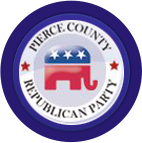Unfortunately Governor Tony Evers doubled down on his big government vision for Wisconsin, vetoing bipartisan legislation that would have provided $250 million in income tax relief for Wisconsin workers.
This veto comes on the heels of proposing over $1.2 billion in tax increases in his first budget and vetoing another middle class tax cut in one of his first acts as governor. Taxpayers need protection from this big government agenda.
The Legislature has extraordinary powers to take bold action to protect taxpayers through their ability to propose constitutional amendments. The Legislature should use this power to create a bulwark between taxpayers and the myriad of tax-and-spend special interests in Madison by enshrining taxpayer protections in the Wisconsin Constitution.
Protecting taxpayers through constitutional amendments has been an increasingly popular tool for formerly high tax states solidifying gains they have made and low tax states making sure that decades of hard work cannot be undone by tax and spend special interests. For example, North Carolina placed an individual income tax cap in their state constitution after slashing their personal income tax rates.
Other states without an income tax like Texas and Tennessee have created permanent bans in their constitution on ever levying income taxes. It is no surprise that this trend of capping tax rates continues to pick up steam. As our political climate gets more unstable and concerning trends like nationalized healthcare – and the high tax rates that will come to pay for it – become commonplace, taxpayers are looking for certainty. This certainty can be provided through such a constitutional amendment.
Wisconsin should follow the lead of these states and cap our current income tax in our state constitution. To be clear, this proposal is to create a ceiling, not a floor. Similar to North Carolina, the Legislature would still have the power to lower income tax rates, they simply could not hike taxes without returning to the voters for another constitutional amendment. Protecting taxpayers in this manner would show Wisconsin is still serious about creating a pro-growth environment.
Detractors may argue that there are circumstances when Wisconsin should raise income taxes but they are misguided. The last decade has shown that even when the Legislature cuts taxes, revenues continue to grow. Building upon Wisconsin’s pro-growth environment and continuing to attract new businesses and workers will increase tax revenues without the need to hike taxes.
Further, Wisconsin is still a high tax state. According to the Tax Foundation, Wisconsin has the fourth highest state and local income tax burden in the nation, is ranked 26th in business tax climate and has a higher individual income tax top rate than most of our regional neighbors (IL, MI, IN, OH, ND, SD, NE). Taxpayers need protection, not tax increases.
Beyond capping the income tax, there are other actions the Legislature should consider as well. Wisconsin still has one of the worst property tax burdens in the nation (fifth highest property tax on the national median value home).
Despite this fact and that a Wisconsin Policy Forum recently revealed that Wisconsin residents could be facing the largest property tax increase in a decade, Evers proposed blowing the cap off the levy limit. The levy limit is the only thing that protects Wisconsinites from even higher property taxes.
The Legislature should propose a constitutional amendment inserting the levy limit in the state constitution. Wisconsinites deserve the security of knowing that our state will never return to the days of double-digit percentage property tax increases.
While progress has undoubtedly been made, Wisconsinites still face a heavy tax burden. In this time of divided government the Legislature may not be able to get sweeping tax reform signed into law, but they can take bold action and create constitutional safeguards to permanently defend Wisconsin taxpayers from tax hikes advocated for by tax-and-spend special interests.
The certainty these reforms would create would send a signal to families looking to move to the state that our government is serious about protecting taxpayers’ pocketbooks and to companies looking to re-locate that Wisconsin is still open for business.
Cory Fish is General Counsel and Director of Tax, Transportation & Legal Affairs for Wisconsin Manufacturers and Commerce.



